Nov 14, 2016
10 Things to Know about Living in Japan
Thinking of making a move to Japan? Cool! Here are some things you might find it useful to know.
1) Japan is Not Just Tokyo
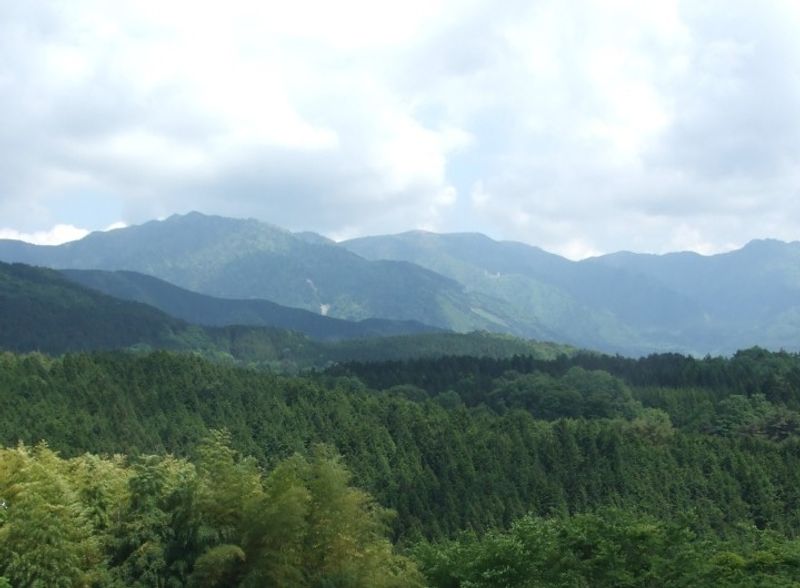
Many people live in the major Japanese cities of Tokyo, Osaka, Kyoto, or Nagoya. There are numerous differences even between these cities including climate and population density. Depending on what brings you to Japan, you might wind up somewhere a bit more rural. The JET program, a government ALT and cultural exchange program, sends native English speakers to communities all over Japan. If they’ve got public schools, they might have a JET or two in the neighborhood. Other ALT companies like Interac and Altia send Assistant Language Teachers (Native English Speakers) to other public schools with also might be scattered anywhere around the country. Beyond that, ekikaiwa (conversational school) options also exist, usually in slightly less rural communities but not always. You can find more job opportunities here.
If you’re not in the big city, you might not have some of the creature comforts you counted on. I was told that all cities in Japan have many convenient 100 yen stores and internet cafes so even if you don’t have internet at your apartment, you can always find a place to send an email. I wound up in Nakatsugawa, a mountain town in Gifu prefecture so small that there were no internet cafes and the nearest 100 yen store required a 45 minute walk. Not every part of Japan shows the technologically advanced, trendy and exciting side you might see in anime or movies. Most of Japan is smaller towns and cities, rural communities where there are more rice fields than Karaoke places.
Supposing you sign up with a company and get on well, research the area you’re likely to go to as soon as you can so as not to be surprised by what you find on the other side of your flight. You might even be able to find Facebook groups for international students and other expats in the area. These folks might be able to give you an idea of where you’re heading as well as answer any questions you might have.
2) Sort It Out!
Shortly after the March 11, 2011 earthquake and tsunami that devastated the Tohoku region (where I still live), I was listening to a piece from a reporter on the ground in Miyagi. What the British reporter found most remarkable about the people in the gym where they would be living for weeks and weeks was that he saw an old woman sorting the garbage into burnable (paper, food, etc) and plastic (wrappers, etc), which I found a surprising thing to be surprised by. At that point, I’d been living in Japan for more than 2 years. I was used to sorting the garbage into those two bags as that is how you throw things away here.
If your bag is not sorted poorly, it may be left there. This is only a big deal I guess if people know whose garbage it is, but if you’re the only foreigner in the building, they will probably assume it’s yours. Recycling also gets sorted and thrown out accordingly. All bottles and cans are meant to be rinsed clean and label-free (sometimes in addition to flattened if plastic) and placed in the correct sorting bin. The bins are colored with kanji for metal, glass, and paper, as well as the katakana for PET bottles. If you’re in a larger city, this may happen every week. In smaller towns, it may only be once a month. Keep an eye out and ask around.
If you miss recycling day and have a few too many pet bottles, you can sometimes throw them away at vending machines or convenience stores, but this is generally discouraged for long-term residents.
3) Garbage Day(s)
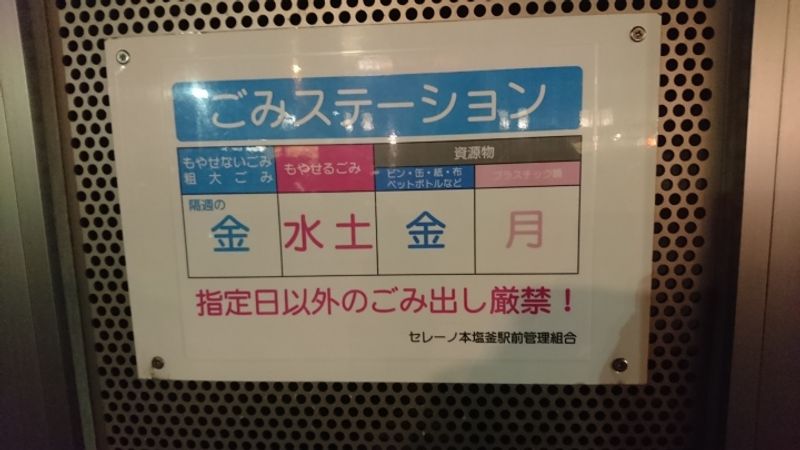
Apartment dumpsters are not a thing in Japan. Instead, there is usually a garbage drop off point and certain days of the week (labeled) for certain types of garbage. I live in an apartment where the drop of point is a small enclosed shed in the parking lot with the days listed on the outside. You are “supposed to” take out the garbage on the morning of the day listed but many people take it out after dark the night before. The garbage bags you use can be found at the grocery stores and your only selection is a matter of size and cost. Notice how they’re all translucent? Yeah. Everyone can see into your garbage.
There are little opaque black bags for the garbage that may need to be taken from the toilet-room once a month. They go in the burnables (even the plastic applicators).
4)Tie It Up!
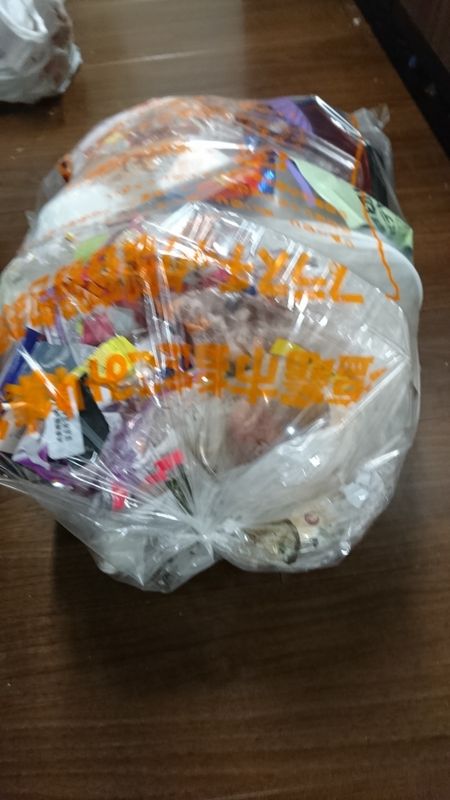
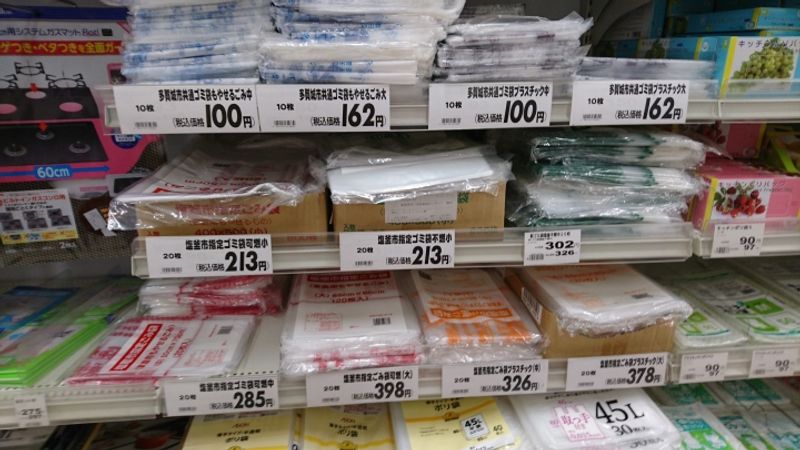
No Glad bags here. You are also meant to leave enough room toward the top of the bag to tie it shut effectively enough to pick it up without it falling apart. This can be a challenge as a country so seemingly advances has not invested in something as basic as draw-string trash bags, but there you go. If you’ve got too much garbage for one, use two. I have seen people tape a bag shut if they need to (if it rips), but I wouldn’t recommend this as a go-to option.
Also, it may be important to note that every city may have different bags, so buy them at the closest grocery store to your apartment if possible, especially if you commute. For my city, the red-labelled bags in the picture are for burnable garbage. The yellow are for plastics. The green are for "special garbage" (like small broken electronics? I don't know. I've never used them.) The blue and black labelled bags on the top row are for the next city over. The bottom row of un-labelled bags are bin liners. Don't throw things away in just these on garbage day or it likely won't go away.
5) Eating Well at the Conbini
When I used to tell friends back home that I grabbed lunch at the convenience store, they freaked out, thinking of chips, slimjims and maybe an ancient sandwich. Most Japanese convenience stores have a plethora of lunch options from salads to rice balls to pasta. Some even have sliced fruit and veggie sticks. Fairly cheap and healthy for a meal on the run.
6) No TV Dinners

In every frozen food section in every Japanese grocery store I’ve visited, there are some reheat-able food options, but mostly side dishes, few main courses, and no combinations of the two. That said, most grocery stores also offer a fried food section where you could pick up a main course to go with your frozen sides if you wanted.
7) Not Fitting In
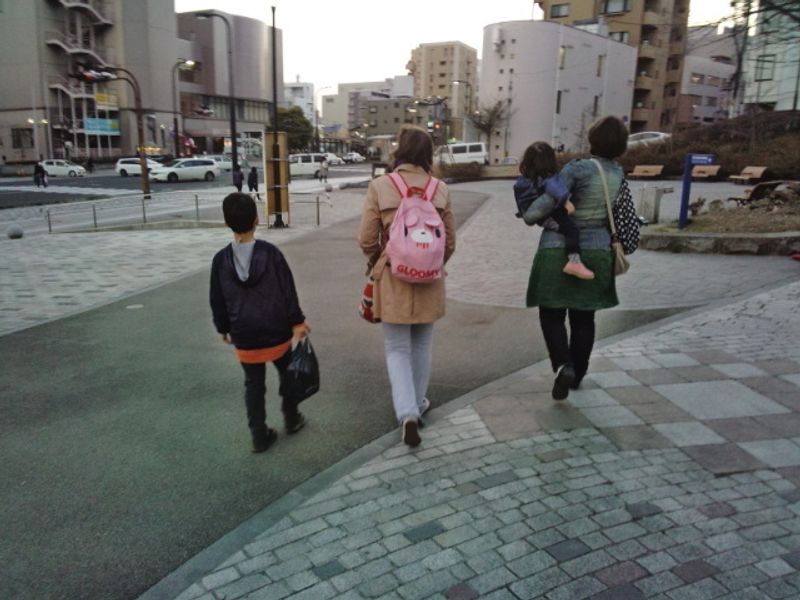
When I see a new foreigner sitting quietly as possible, trying hard to be part of the Japanese scenery, I want to give them a hug. After a few years, you stop trying so hard to blend in, especially in ways that might be stressful or unnatural to your character. You have to. It's survival. This doesn’t give you the right to be obnoxious on purpose, but it isn't the end of the world if the laugh a little too loudly at a joke or eat while walking, or even just wear a tank top.
So try to fit in, but don’t bend yourself out of shape. On some level, you may never feel at one with this environment, and that is okay. Most of us long-term residents don’t really “belong here” either. We’re just still having our adventure.
8) Forbidden Shoulders
Especially for women living outside of the main cities, you’ll notice very few women who aren’t foreign tourists ever wearing tank tops. Shoulders for some reason are covered almost always, though extremely short shorts are tolerated among younger people. Cleavage is also a no-no, as I have noticed and been made aware of. If your undershirt slips and reveals even an inch of creased connection, old men may freak out at you about it. This happened to me last summer. If you're comfortable with your body and it doesn't bother you to get a little more wayward attention, do what works for you. Maybe your town will have a smaller population of creepy old men than mine does.
Need a solution? You can buy short-sleeved camisoles at Uniqlo, especially helpful if you have sleeveless or strapless casual-business attire for summer. You can also get undershirts to help out. I do recommend ladies bringing as much underwear (bras and panties) as you think you will need unless you happen to be smaller than around a size 8.
9) Turn On the Hot Water
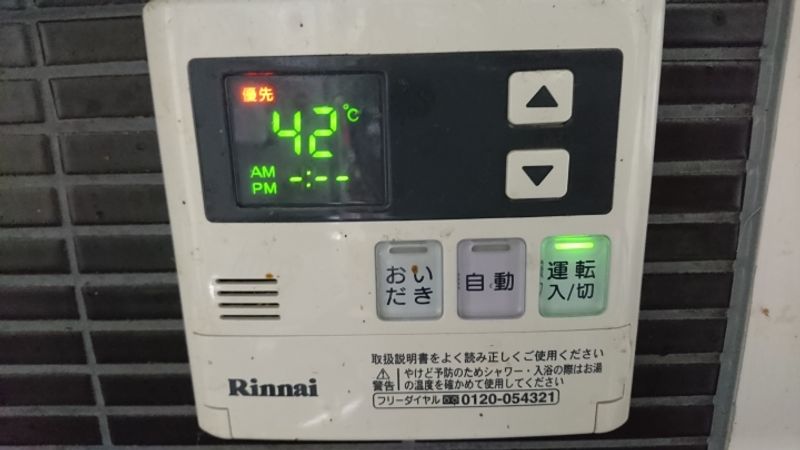
In most American households, the water heater is a constant worker, hiding in a little room and doing its job unbidden and unseen. Worst case scenario, it’s a little old so you turn on the water a few seconds before you need it to be hot.
Every Japanese apartment I’ve ever lived in did not have an automatically starting water heater. Instead, the hot water had to be turned on manually with the press of a button. The running water would then eventually (more quickly with newer systems) get warm. In some, you can also adjust the temperature of the water and our newest one even has a button that runs a hot bath for you. Just remember to plug the tub first.
10) You Do Need Some Japanese
Many things, from electronics to ATMs at Japan Post Bank, have English language options. Many do not. For major paperwork, you might need a Japanese-savvy friend to assist, but in your own home, it pays to at least be able to turn on the kotatsu or air conditioner. Learning hiragana and katakana will also help a lot, as many objects in the home are known by their non-English sounding katakana names like パソコン pasacon (PC), レンジ renji (microwave) or エアコン eacon (AC). Here are five kanji that might be useful in your first weeks in Japan. For many, this is only one potential meaning, but the meaning that will be used if you see it on a button most of the time.
Kanji -- Meaning
止 -- stop ------- 入 -- on ------- 切 -- off ------- 弱 -- weak ------- 強 -- strong



0 Comments